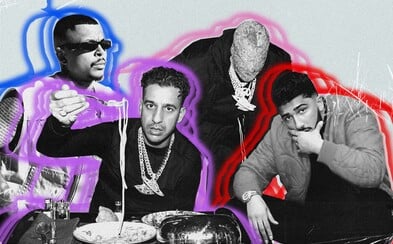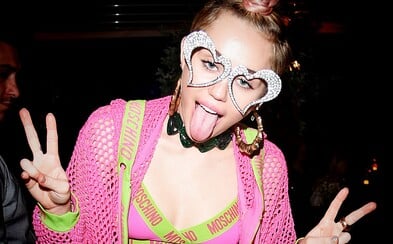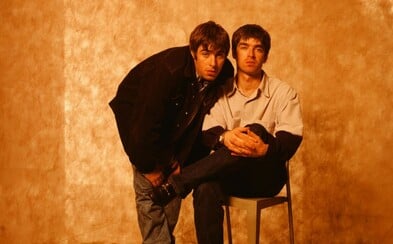 The French Rap Scene Is Richer Than Ever. Check Out Our Selection Of The 9 Best Performers Today
The French Rap Scene Is Richer Than Ever. Check Out Our Selection Of The 9 Best Performers Today
The French Rap Scene Is Richer Than Ever. Check Out Our Selection Of The 9 Best Performers Today
The French Rap Scene Is Richer Than Ever. Check Out Our Selection Of The 9 Best Performers Today
Janis Joplin: Story of the „Ugliest Man on Campus“ That Took the World by Storm
Janis Joplin's career was relatively short-lived, but absolutely intense. We present to you a portrait of a singer whose love of heroin has become fatal.
If problems persis, please contact administrator.

Ugliest Man on Campus. Receiving such a title most likely wouldn't make anyone happy. Especially if you're a woman, it can really mess with your head. American blues and rock singer Janis Joplin, one of the greatest heroines of feminism in music, has earned such a cruel title in 1964.
Whenever we mention Janis Joplin, most of us instantly think of her powerful, raspy voice, screaming the verses of her most famous song, Cry Baby. Energetically but with the everpresent uncertainty and sadness. Those who know will also imagine the big glasses, wide smile, some even a Porsche 365C with the distinctive psychedelic design. One of the first members of the infamous "27 Club" embodied a lot of pain and anxiety, but most of all independence in her verses.
Being a child of war is definitely not a win, and although Janis was born two years before it ended, the environment in which she grew up was majorly marked by the conflict and the Cold War broke out just a few years after the fall of Germany. The society was facing many difficulties, but the Joplins in Port Arthur, Texas have managed to handle them relatively well.
Janis' mother was a businesswoman and her father was an engineer, and as the oldest child, she was given all the care she needed. Janis herself later described her father as a closeted intellectual. "I think I am indebted to him for being the way I am. The biggest moment was when we learned to write our names. At that very moment we were given a card in the library and we had to read. Television did not exist in our house, " she described in an interview with David Dalton.
Thanks to such background, Janis became a relatively well-educated young girl, but very soon she began to give in to alcohol and experiment with drugs. In the early 60s, she began performing in various clubs in Houston and later in Austin, where she studied sociology and the arts.
At that time, however, she was already struggling with low self-esteem due to her problematic skin. In college, she received the superlative "Ugliest man on campus," which was the last straw for young Janis.
In the most beatnik fashion, she hitchhiked across the United States in 1964 to the very popular San Francisco. There she also joined the band Big Brother and the Holding Company in 1966, with which she began performing as a lead singer. Almost instantly turning into a sensation. Later she recorded the album Cheap Thrills with them, which became very commercially successful and Janis became one of the biggest stars of the American rock scene.
Quiet megastar with a powerful voice
In the 60s, women on the scene were sort of like decorations on a Christmas tree. They looked beautiful, didn't stand out much, didn't occupy themselves with social issues, and their main task was to entertain male audience with their gentle voice and their absolutely perfect appearance.
The Rock God pedestal belonged exclusively to men. The (male) audience considered women (aside from a few exceptions) more as so-called groovy chicks, moving their bodies to the rhythm. Even though the show wouldn't be as good without them, the superstar dudes with guitars would be eventually just fine without them.
Women in general were also seen in this light, and singers such as Brenda Lee supported the general idea of "cute" singers with their performances. Although some of the singers have managed to raise some political and social issues - especially on the folk scene - their appearance still corresponded with the general ideas about what a woman should look like on stage. Just like within the household at the time, the idea was primarily a humble and obedient girl.
On the other hand, in the 60s, a second wave of feminism formed in the United States, which demanded women to have the same rights and freedom in their choices as men. In the context of the Vietnam War, this gender war took place more or less in silence. Speaking of Janis, we certainly cannot call her a herald of feminist ideas. Her role was quiet but significant.
Janis didn't have to say anything. Her appearance said everything for her. Long messy brown hair, loose clothing, and a bottle of Southern Comfort whiskey in her hand were screaming, "This is me, take it or leave it." Thanks to Janis, many women have found the courage to project their personality into their appearance and stop being just a doll for men to adore.
In 1999, The Rise and the Fall of a Feminist Counterculture was published, where Jerry Rodnitzky describes the role of Joplin as an important character within the gender war: "She helped free millions of young girls from lipstick and garter belts when she came up with a look that was typically no bra and a wildly mixed, baggy, style of dress. Her long, brown, non-shiny hair has helped some women back down from the exaggerated combing, washing, grooming, and dyeing that still haunts much of America today. She gave the girls the courage to be themselves. "
Journalist Lillian Roxon, who followed her career as a musician has a similar opinion. "If you didn't look like Janis Joplin before her concert, you could be sure you will when you leave," she wrote in the book No One Waved Good-Bye.
Just like her appearance, she perceived her sexuality in a very independent fashion. She did not consider her body as an instrument of men's satisfaction, and sex was a way for her to satisfy one's momentary lust and desire on both sides. On top of that, she was bisexual herself, although her coming out was never official.
Cursed by heroin
The era in which Janis was active is almost inextricably linked to drugs. As with many other artists of the time, heroin was a love and a curse at the same time. By combining alcohol with this hard drug, Joplin probably managed to detach herself from the demons of low self-confidence that accompanied her throughout her whole life. In addition to the above mentioned whiskey, heroin was an integral part of her.
All of that culminated in 1968, when she left the band Big Brother and the Holding Company. Her addiction also had a major impact on her relationships with friends, producers or other colleagues from the music world.
She had to form The Kozmic Blues Band real quick, with whom she recorded the album I Got Dem Ol 'Kozmic Blues Again Mama!, which might not have reached such cosmic heights as previous bands records, but Janis remained a very sought after artist thanks to her wild appearance on stage.
The thing is that she departed from the band only one year after playing together. At that time, heroin addiction had already crossed the line that the then 26-year-old singer could bear. She put her music career on pause and went on a "rehab trip" to Brazil.
However, her drug independence was short-lived, and when Janis returned to the United States the same year, she fell into it again. She and her new group of musicians Full Tilt Boogie Band tried to dedicate themselves to the creation of the album Pearl, which also contains most of her acclaimed songs. She did not live to see the release in 1971, unfortunately.
Her addiction culminated on October 4th, 1970, when the iconic Porsche remained empty in front of a motel in Los Angeles. Her driver was found dead in her room. Cause of death: Heroin intoxication in combination with a strong dose of alcohol. Janis thus unknowingly joined Jimi Hendrix in the new 27 Club, which later expanded to include Jim Morrison of The Doors, Kurt Cobain and more.
Janis lived a fast and intense life with all the pleasures that bohemian life has to offer, and she passed in the very same way. She prepared for her departure by leaving her friends 2,500 dollars, so that they could enjoy one last party together after she left.
51 years later, the energy and independence in her emotional songs still stir up many parties today.
If problems persis, please contact administrator.














